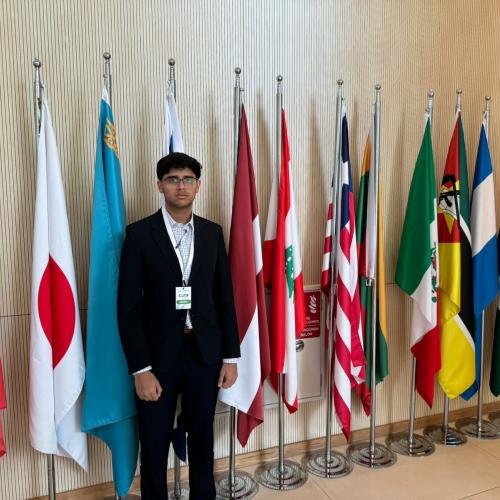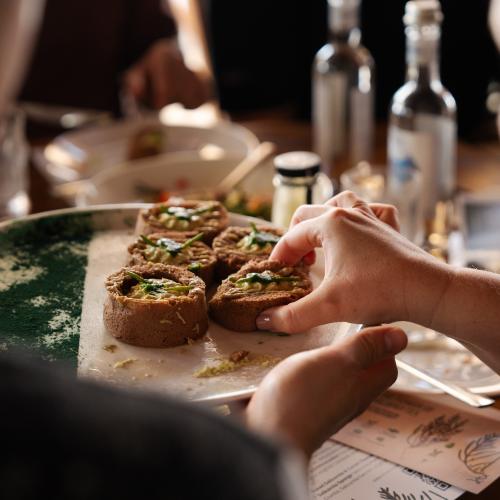Youth Voice: The impact of Mangrove Restoration on Local Crab Populations
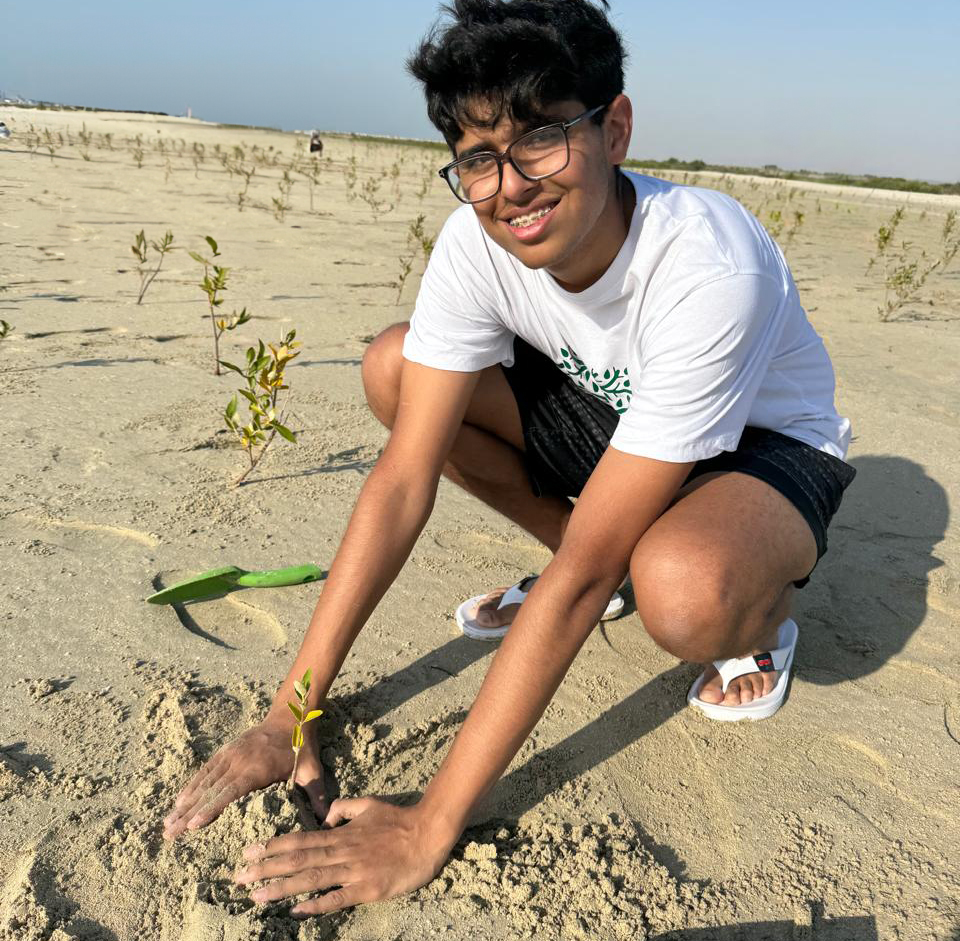
By Faris Saadaat, Youth Ambassador for Nature. This blog is part of our Youth Voices series in which future leaders and change-makers share their perspectives and passions on nature and climate.
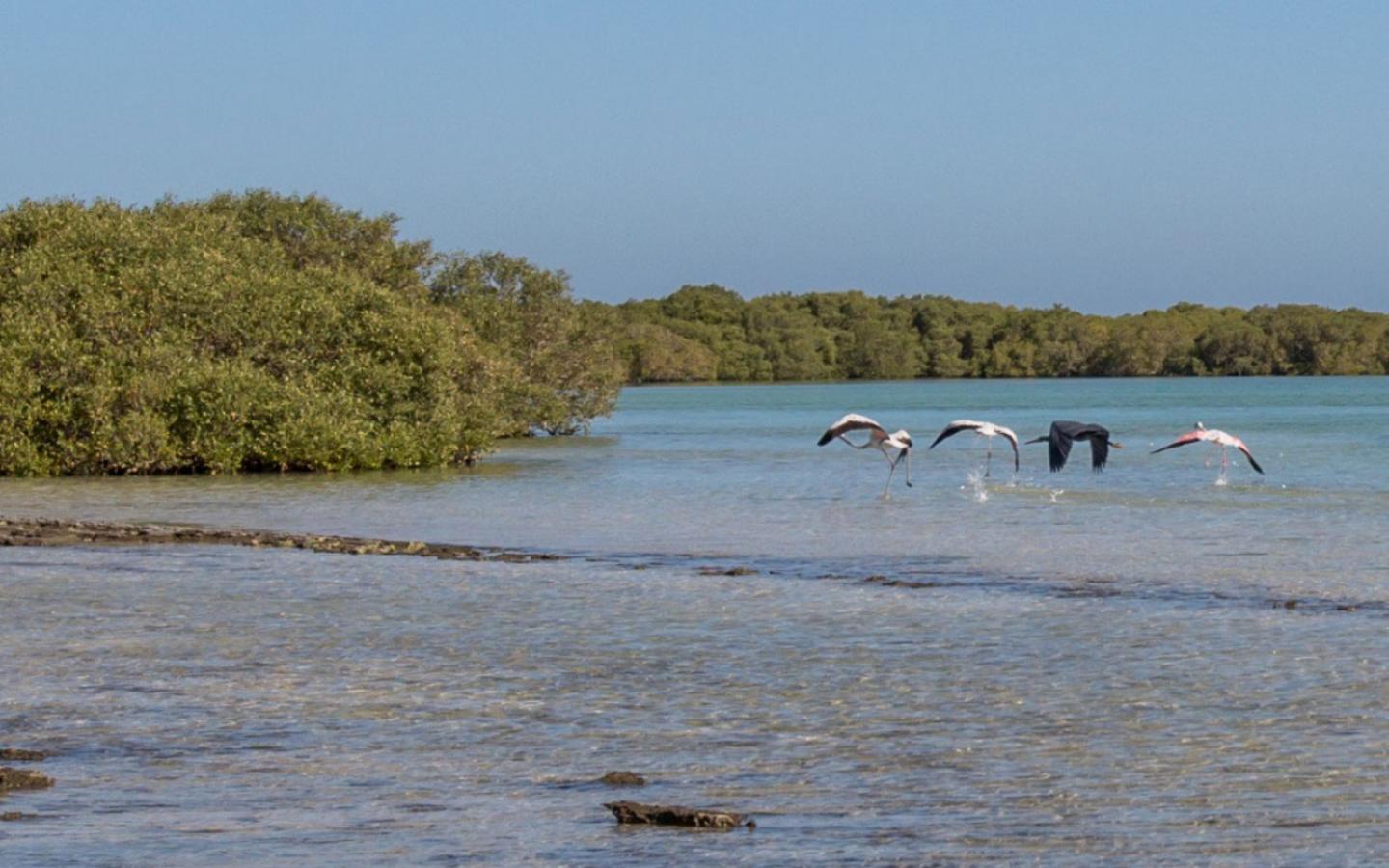
Did you know that there are more than 4,500 species of crabs worldwide, ranging from the huge Japanese spider crab that inhabits the depths of the Pacific oceans, to the vampire crab that scuttles across rainforest floors in Java, Indonesia.
Here in the UAE, crabs flourish in mangroves, making their homes in burrows in the mud.
MANGROVES - A SAFE HAVEN FOR CRABS & NATURE
Mangroves are evergreen ecosystems in the UAE that sequester carbon from the atmosphere, proving vital in the fight against climate change. Mangroves also foster biodiversity through a healthy ecosystem. Crabs contribute to this ecosystem through the creation of burrows that aerate soil, decomposing leaf litter that release nutrients for mangroves and act as food for other animals and birds.
During my internship at Jebel Ali Wildlife Sanctuary, I always wondered whether the restoration of mangroves actually helps crab population flourish. Hence, I decided to conduct a personal project to investigate the relationship between the age of restored mangroves and crab abundance.
WHY THIS MATTERS
Understanding the relationship between restored mangroves and crab abundance can improve crab conservation and mangrove restoration efforts in the UAE through a greater understanding of ecosystem dynamics between crabs and mangroves.
The purpose of my research is to analyze the relationship between the abundance of local crab species – including the mottled crab and white-handed fiddler crab – and the age of the restored mangroves in Jebel Ali Wildlife Sanctuary in the UAE.

Mangrove restoration in Jebel Ali Wildlife Sanctuary
MY RESEARCH
In the last three months of my internship, I carried out my fieldwork on mangroves and crabs in one of the dedicated mangrove restoration sites in Jebel Ali Wildlife Sanctuary, where mangrove restoration has been continuously carried out over the last 10 years or more.
First, I earmarked various trees in the mangrove forests aged 5 weeks, 6 months, 2 years, 4 years, and 6 years. Drawing upon my learnings from school and the internship, I then assessed multiple variables such as leaf litter, vegetation height of each mangrove, density of the vegetation of the mangroves in each lot, and the stem/trunk diameter of each mangrove tree, and benchmarked these against each of the above-aged mangrove tree lots.
MY FINDINGS
My analysis of the above data collected at the Jebel Ali Wildlife Sanctuary reveals the relationship between mangroves of different ages and crab abundance, and identifies the various factors affecting this relationship including the amount of light, vegetation density, and average vegetation height. My findings are as follows:
● Crab abundance increases exponentially as the restored mangroves grow older
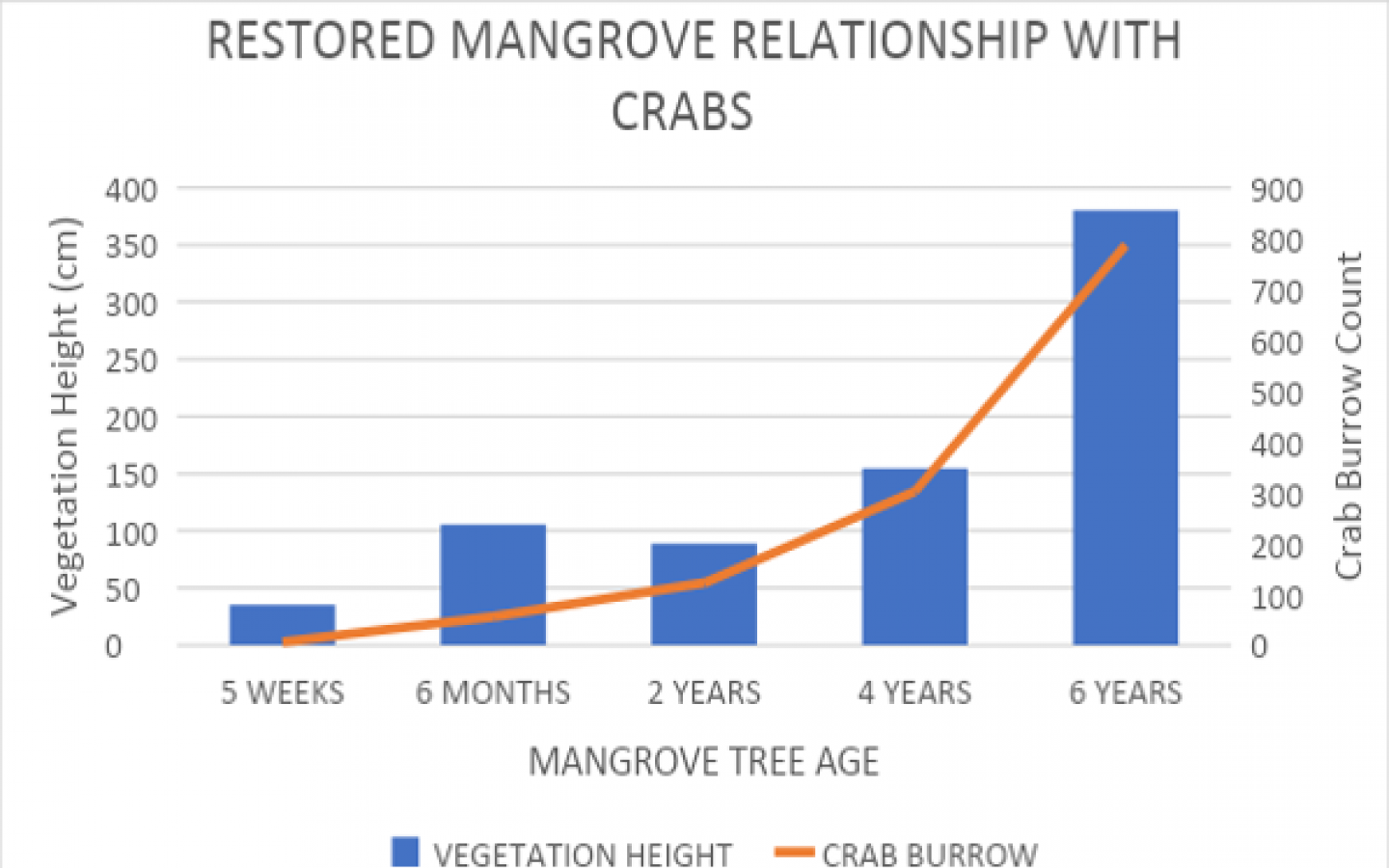
● Average vegetation height and its density shows a distinct increase as restored mangroves age. The increase in height in vegetation indicates ecological success of mangrove restoration efforts.
● Increase in vegetation height could be directly correlated with the abundance of crabs due to greater nutrient cycling from greater leaf litter and increased shelter for crabs.
An interesting thing to note is that the amount of light, does not present a linear relationship with the aging of mangroves. This suggests that the shade and darker environment provided by older mangroves, could prove to be more favorable for crabs as it reduces crabs’ vulnerability to predators.
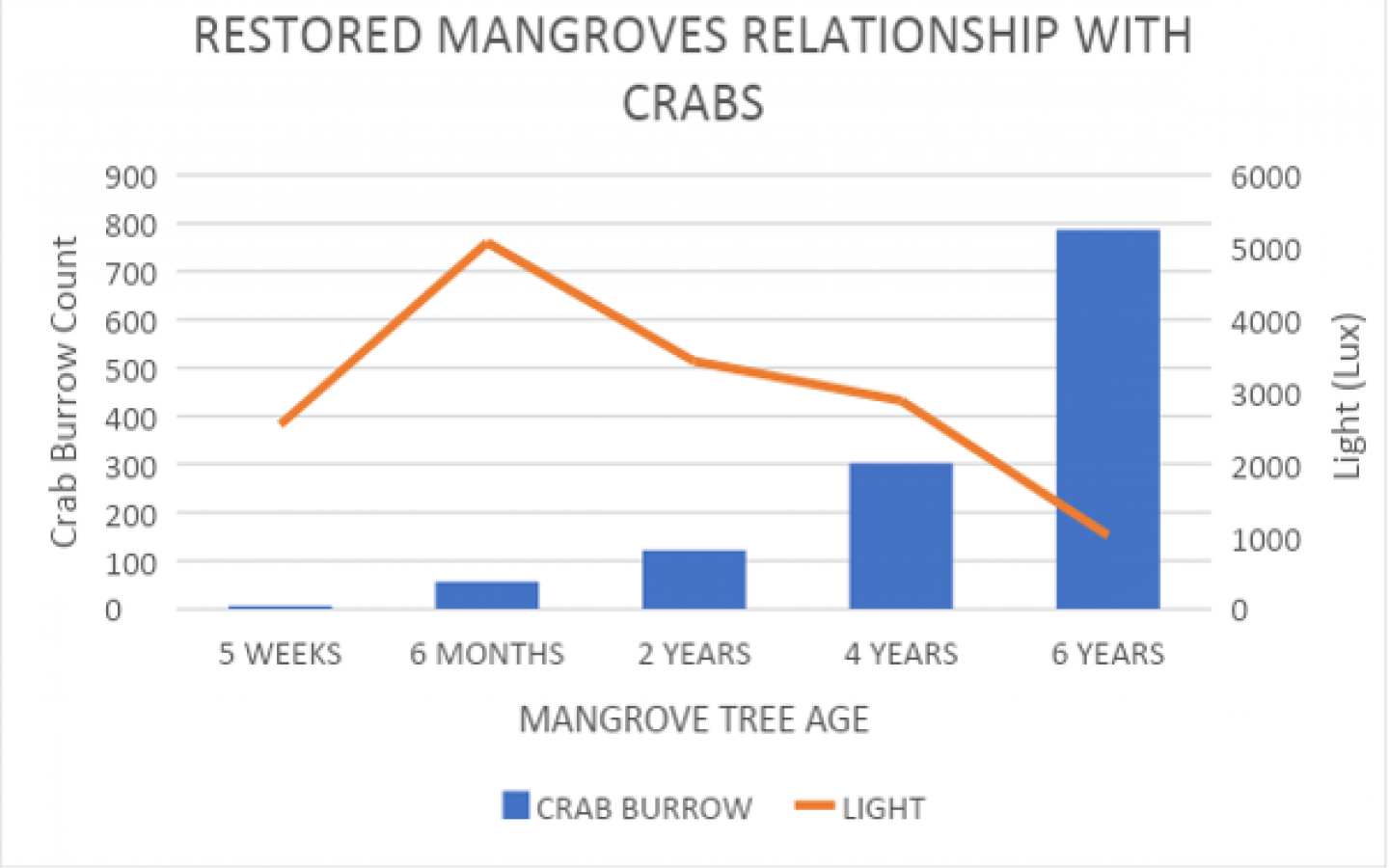
Chef Kelvin Cheung from Jun’s with Salicornia
WHAT IS EVIDENT FROM THE ABOVE ANALYSIS?
Crab abundance has been much higher in restored mangrove forests of greater age at Jebel Ali Wildlife Sanctuary, because of reduced light, greater vegetation height and reduced vegetation density – all of which play a factor in providing a conducive environment for crabs, positively impacting their population growth.
THE BIGGER PICTURE #COP16COLOMBIA
As the UN Biodiversity Conference COP16 in Colombia comes to a close, and with just six years left to meet the goals of the Kunming-Montreal Global Biodiversity Framework, the takeaway is very clear: Biodiversity is crucial to the survival of human race and we must act swiftly to halt and reverse the biodiversity loss.
My research is a small attempt to showcase the interconnectedness of the biodiversity and its impact on a number of species, including crabs. In fact, I believe that mangroves are a good example of the interdependence between humans and the nature.
Mangrove restoration is a key Nature-based Solution that we can explore in the UAE to overcome nature loss and support biodiversity. The UAE government has set an ambitious target of planting 100 million mangroves by 2030. By supporting mangrove restoration efforts in the UAE, we can do our part to restore nature, increase the population of crabs, and establish healthy ecosystems.

